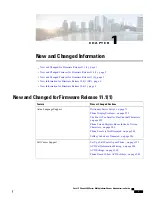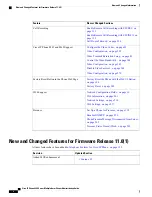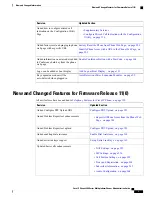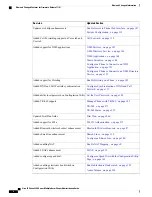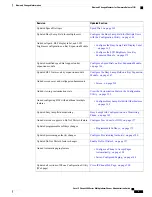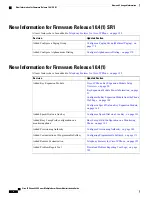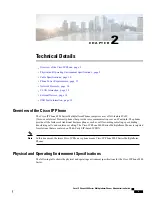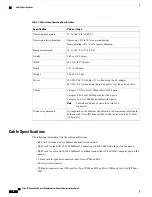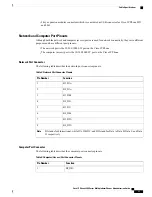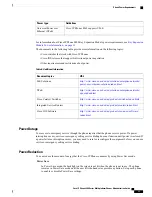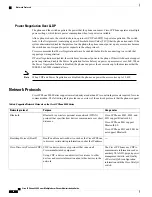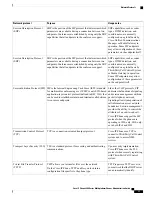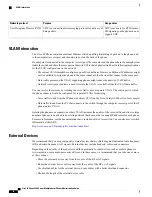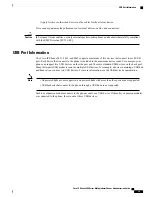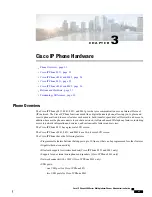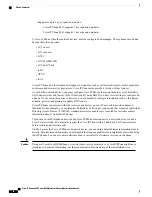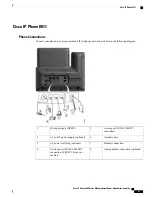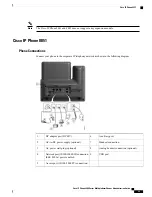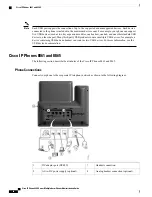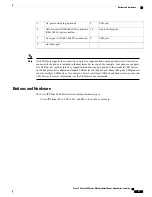
Usage notes
Purpose
Network protocol
DHCP is enabled by default. If
disabled, you must manually
configure the IP address, subnet
mask, and gateway on each phone
locally.
If you cannot use option
150, you may try using
DHCP option 66, 159, or
160.
Note
DHCP dynamically allocates and assigns an IP address to
network devices.
DHCP enables you to connect an IP phone into the network
and the phone to become operational without the need to
manually assign an IP address or to configure additional
network parameters.
Dynamic Host Configuration
Protocol (DHCP)
Cisco IP Phones use HTTP for
XML services, provisioning,
upgrade and for troubleshooting
purposes.
HTTP is the standard way of transferring information and
moving documents across the Internet and the web.
Hypertext Transfer Protocol
(HTTP)
Web applications with both HTTP
and HTTPS support have two
URLs configured. Cisco IP Phones
that support HTTPS choose the
HTTPS URL.
Hypertext Transfer Protocol Secure (HTTPS) is a combination
of the Hypertext Transfer Protocol with the SSL/TLS protocol
to provide encryption and secure identification of servers.
Hypertext Transfer Protocol
Secure (HTTPS)
The Cisco IP Phone implements
the IEEE 802.1X standard by
providing support for the following
authentication methods:
EAP-FAST, and EAP-TLS.
When 802.1X authentication is
enabled on the phone, you should
disable the PC port and voice
VLAN.
The IEEE 802.1X standard defines a client-server-based
access control and authentication protocol that restricts
unauthorized clients from connecting to a LAN through
publicly accessible ports.
Until the client is authenticated, 802.1X access control allows
only Extensible Authentication Protocol over LAN (EAPOL)
traffic through the port to which the client is connected. After
authentication is successful, normal traffic can pass through
the port.
IEEE 802.1X
The 802.11 interface is a
deployment option for cases when
Ethernet cabling is unavailable or
undesirable.
Only Cisco IP Phone 8861 and
8865 support WLAN.
The IEEE 802.11 standard specifies how devices
communication over a wireless local area network (WLAN).
802.11n operates at the 2.4 GHz and 5 GHz band and
802.11ac operates at the 5 GHz band.
IEEE 802.11n/802.11ac
Cisco IP Phone 8800 Series Multiplatform Phones Administration Guide
15
Network Protocols
Summary of Contents for 8851
Page 23: ...P A R T I About the Cisco IP Phone Technical Details page 9 Cisco IP Phone Hardware page 21 ...
Page 24: ......
Page 36: ...Cisco IP Phone 8800 Series Multiplatform Phones Administration Guide 20 USB Port Information ...
Page 48: ......
Page 98: ......
Page 136: ......
Page 168: ...Cisco IP Phone 8800 Series Multiplatform Phones Administration Guide 152 XML Services ...
Page 204: ...Cisco IP Phone 8800 Series Multiplatform Phones Administration Guide 188 Capture Packets ...
Page 210: ......

